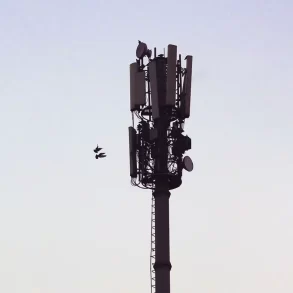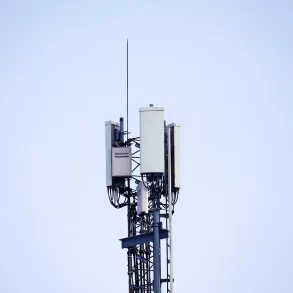m Sequence (MLS) is an important concept in communication technologies that allows devices to synchronize with each other. This blog will provide an overview of m sequences, how they work, and their applications. We’ll explore some key questions around maximum length sequences: What exactly are they? Why are they useful? How are they generated and used in practice? Read on to learn more.
M sequences, also known as maximal length sequences or pseudo-random binary sequences (PRBS), are repeating binary sequences with specific properties that make them exceptionally useful for applications like timing, synchronization, and spreading of communication signals. Though the terminology sounds complex, the core ideas behind m sequences are approachable. We’ll unpack definitions and applications in plain terms over the course of this blog.
Fundamentally, m sequences are clever binary codes that allow senders and receivers to coordinate actions very precisely. This coordination hinges on some special mathematical properties of these codes related to their length, balance of 1’s and 0’s, and autocorrelation. We’ll explore how to generate m sequences using linear feedback shift registers and walk through some key applications in spread spectrum communications and cryptography that rely on their pseudo-random nature.
By the end, you’ll have an understanding of how these subtle sequences enable the performance and security of modern communication systems. The theory may be advanced, but the utility is down to earth. Let’s dive in!
Feel free to explore this comprehensive 4G/LTE overview of the Power of Physical Cell ID – it’s a valuable resource in this category.
Which Screen Recorder is Best for Gaming?Understanding m Sequences
m Sequences, also known as maximum length sequences or MLS, are a special type of repeating binary sequence that have properties that make them exceptionally useful in digital communications and information technology. Below are some key aspects of m sequences:
What is an m sequence?
An m sequence is a binary sequence that repeats in a periodic fashion, with a length equal to 2^n – 1, where n is the number of stages in the circuit that generates it. This maximal length gives them their name. They are pseudorandom in nature but also have very well-defined mathematical properties.
Some useful attributes of m sequences include:
How is Artificial Intelligence Changing the Recruiting Process Quizlet?- Balance of 1s and 0s over their full period.
- Controlled runs properties – constraints on consecutive 1s or 0s.
- An autocorrelation function with a very sharp peak.
These traits allow m sequences to simplify tasks like timing, synchronization, and channel coding. Their pseudorandom appearance is also advantageous in applications like spreading codes.
Why “m sequence”?
The name comes from mathematician Solomon Golomb who studied these sequences extensively. The “m” stands for “maximal length”, referring to the longest sequence possible before repetition with a given generation circuit.
They are also widely known as pseudorandom binary sequences (PRBS) due to their seemingly random nature, while being fully deterministic. Different names reflect different applications and points of view, but they refer to the same mathematical object.
How to Record a Video on YouTube – Step-by-Step GuideWhat is an m sequence?
An m sequence, short for maximal length sequence, is a repeating binary sequence with specific properties that make it exceptionally useful for synchronization, timing, and scrambling in communication systems.
As the name suggests, the maximum period possible for the length of m sequences is present, which means that they repeat after 2^n – 1 bits, where n represents the number of stages in the linear feedback shift register that generates them. This balance of 1’s and 0’s gives them noise-like properties, while their periodic autocorrelation function provides synchronization capabilities.
Specifically, m sequences achieve three useful properties:
Logo Design Trends 2024: Exploring Emerging Branding Strategies- Balance of 1s and 0s – Equal number of 1 and 0 bits, so signal has no DC bias.
- Good runs properties – Low proportion of very long runs of the same bit.
- Sharp autocorrelation – Low out-of-phase correlation allows synchronization by detecting sequence position.
Their pseudo-random noise-like features, combined with the timing information offered by the autocorrelation peak, enable m sequences to scramble data streams for transmission and facilitate alignment for decoding – a powerful combination underlying many sophisticated communication protocols.
Why “m sequence”?
The term “m sequence” was introduced by mathematician Solomon Golomb, who made important contributions to coding theory and communications. The “m” stands for “maximal length”, referring to these sequences’ defining property – they cycle through every possible non-repeating combination of 1s and 0s before repeating.
These pseudorandom binary sequences are also often referred to as PRBS, which is an acronym for “pseudo-random binary sequences”. Although the output may appear random, deterministic, linear feedback shift register circuits generate m sequences. Their balance of randomness and structure gives m sequences a versatility that has secured their place in everything from CDMA spread spectrum communication to cryptography.
Generating m Sequences
Linear feedback shift registers (LFSRs) are a common method used to generate m sequences. An LFSR consists of a shift register of flip-flops along with XOR gates that connect to various bits in the shift register. The output bit of the LFSR depends on the previous state of the shift register, creating feedback that results in a pseudo-random bit sequence.
Some key properties of LFSR-generated sequences that make them useful as m sequences:
- Periodicity – After a maximum period, the sequence repeats. The period depends on the number of flip-flops and the XOR tap configurations.
- Number of sequences – For an LFSR of a given length, there is a finite number of possible m-sequences that can be generated depending on the primitive polynomial used.
- Primitive polynomials – LFSRs can generate an m-sequence if and only if the taps correspond to a primitive polynomial. These special polynomials are well-studied and tabulated.
By tapping different bits from the shift register stages and using different primitive polynomials, LFSRs can generate many different m sequences with useful correlation properties from a simple shift register mechanism.
Linear feedback shift registers
Linear feedback shift registers (LFSRs) are a common and efficient way to generate maximal length sequences. As the name suggests, an LFSR consists of a shift register made up of flip-flops, with the output of certain stages “fed back” via XOR gates to influence the next state.
The configuration of the feedback taps determines the sequence produced by the LFSR. By carefully selecting these taps based on properties of primitive polynomials over GF(2), the LFSR can generate a maximal length sequence with useful randomness and autocorrelation attributes.
With just a few components – flip-flops provide memory while XOR gates update the sequence – LFSRs produce sequences rhetorically long in proportion to the number of stages. The output sequence depends exclusively on the LFSR’s current state, satisfying the Markov property. Once initialized, an LFSR of length L will cycle through 2^L – 1 states before repeating.
Properties of LFSR sequences
Linear feedback shift registers (LFSRs) used to generate m sequences have some useful mathematical properties:
Periodicity – An LFSR with N stages will generate a repeating sequence of maximal length 2^N – 1 before repeating. This periodicity allows reliable timing and synchronization.
Number of sequences – For a given LFSR length, there are a limited number of tap configurations that can generate m sequences. This correspondence with primitive polynomials aids sequence analysis.
Primitive polynomials – m sequences satisfy a primitive polynomial equation. This relationship allows both software algorithms and physical LFSR hardware to generate the sequences. Certain lengths have more possible primitive polynomials and hence more possible m sequences.
Applications
m sequences have found wide application in communication systems due to their useful mathematical properties. A major area is spread spectrum communications, where m sequences are used to spread and dispread signals across a wideband in code division multiple access (CDMA) systems. By assigning each user a unique m sequence code, multiple signals can transmit simultaneously over the same frequencies, minimizing interference.
In cryptography, the pseudo-random nature of m sequences makes them well-suited for stream ciphers. The sequences can be combined with plaintext using XOR logic to generate secure ciphertext. They also play a role in authentication, where their autocorrelation properties help verify the authenticity of a received signal.
For error detection and correction, m sequences can be used to structure codewords in ways that limit the impact of errors. When errors occur, the mismatched autocorrelation with the expected sequence reveals the presence of errors. Interleaving codewords and packets also avoids error bursts. Through these techniques, communication reliability improves.
The mathematical theory around m sequences enables these sophisticated applications in real-world systems. As coding techniques progress, we may see m sequences continue to evolve in their usage for security, access, and reliability.
Spread spectrum communications
Spread spectrum communication techniques use m sequences to spread data signals across a wider bandwidth to enable multiple access and make transmissions more secure. A key application is code division multiple access (CDMA) systems.
In CDMA, each user is assigned a unique m sequence code, which scrambles their signal across the full channel bandwidth. This allows multiple users to transmit simultaneously while still being individually decoded at the receiver. The scrambling and descrambling effect of the m sequences provides privacy and makes CDMA signals resilient to interference.
M sequences prove useful for spreading signals because their noise-like autocorrelation properties avoid peaks that could interfere with other user codes. Their balance and run properties also enable reliable synchronization between transmitters and receivers amidst the scrambled signal overlap.
By leveraging m sequences, spread spectrum and CDMA systems can accommodate multiple simultaneous users, reduce power, and gain communication robustness – helping drive the adoption of CDMA in 3G and 4G cellular networks. The scramble codes underpin reliable and efficient wireless connectivity.
Cryptography
Cryptography relies on m sequences to enable secure communication through encryption and authentication schemes. As pseudo-random bit streams, m sequences can be used as the key generators in symmetric stream ciphers for encrypting messages. The sender and receiver share the same m sequence generator to produce a random keystream. This keystream is then XORed with the plaintext to produce the encrypted ciphertext.
Decryption reverses the same process – the receiver reproduces the keystream using the same shared m sequence generator, which then gets XORed with the ciphertext to recover the original plaintext. This cryptographic technique ensures confidentiality and privacy.
Additionally, m sequences lend themselves to digital signature and authentication applications because of their balance and autocorrelation properties. Verifying that an unchanged m sequence provides assurance that an authenticated source originated the message or transmission and that it was not tampered with in transit. These cryptographic principles help uphold integrity and non-repudiation in communications.
Error detection/correction
Error detection and correction are critical for reliable data transmission. Even small errors can corrupt files or cause miscommunication. m sequences help detect and even correct errors by introducing structured redundancy.
If errors occur randomly during transmission, they can result in bursts that make data unusable. Interleaving rearranges data so that error bursts are distributed more evenly. This makes it easier to detect and correct errors across independent coding blocks.
While extra information bits enable error correction, they reduce throughput. Communication engineers balance reliability with efficiency based on use case constraints like latency. For example, forward error correction adds enough redundancy for receivers to deduce errors, avoiding retransmission delays.
Conclusion
m sequences are versatile, well-studied, pseudo-random sequences with useful autocorrelation properties. They play important roles in timing, synchronization, scrambling, and spreading communication signals. We explored linear feedback shift registers for generating m sequences and some key applications like CDMA and cryptography that rely on these clever binary sequences to function effectively.
Closing remarks
m sequences demonstrate how subtle mathematics gets applied in practical and widespread technologies. As communication systems advance, so to do the codes that enable their performance and security. The pseudo-random nature yet mathematical precision underlying m sequences lend them perfectly to channel coding applications like CDMA spread spectrum that must balance structure with randomness. Their autocorrelation properties help recover timing in the midst of noise. And their cryptographic strength maintains confidentiality. The interplay between mathematics and engineering will only continue as we push systems to both greater efficiency and reliability. Perhaps one day, more sophisticated m sequence variants will emerge from explorations at this fertile intersection. For now, we have a versatile framework to synchronize and protect communications.







